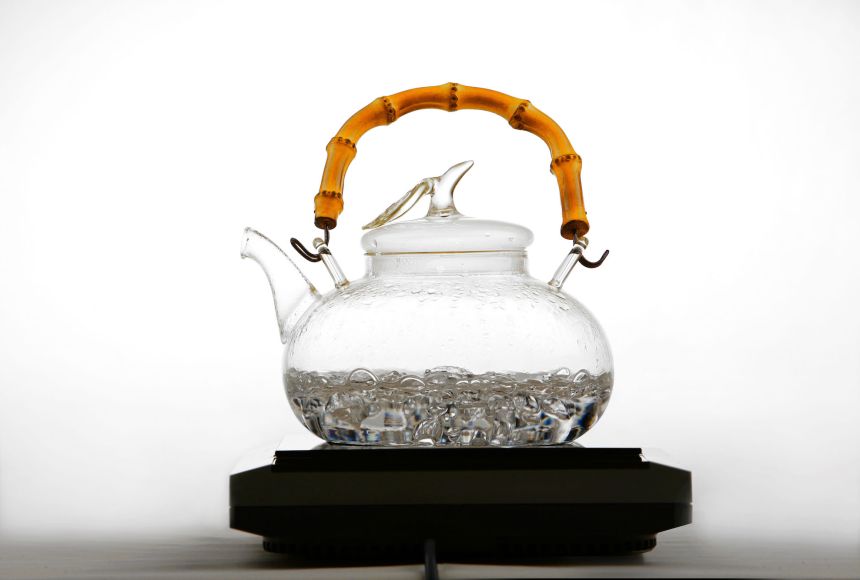Energy cannot be created or destroyed, meaning that the total amount of energy in the universe has always been and will always be constant. However, this does not mean that energy is immutable; it can change form and even transfer between objects.
A common example of energy transfer that we see in everyday life is the transfer of kinetic energy—the energy associated with motion—from one moving object to a stationary object via work. In physics, work is a measure of energy transfer and refers to the force applied by an object over a distance. When a golf club is swung and hits a stationary golf ball, some of the club’s kinetic energy transfers to the ball as the club does “work” on the ball. In an energy transfer such as this one, energy moves from one object to another, but stays in the same form. A kinetic energy transfer is easy to observe and understand, but other important transfers are not as easy to visualize.
Thermal energy has to do with the internal energy of a system due to its temperature. When a substance is heated, its temperature rises because the molecules it is composed of move faster and gain thermal energy through heat transfer. Temperature is used as a measurement of the degree of “hotness” or “coldness” of an object, and the term heat is used to refer to thermal energy being transferred from a hotter system to a cooler one. Thermal energy transfers occur in three ways: through conduction, convection, and radiation.
When thermal energy is transferred between neighboring molecules that are in contact with one another, this is called conduction. If a metal spoon is placed in a pot of boiling water, even the end not touching the water gets very hot. This happens because metal is an efficient conductor, meaning that heat travels through the material with ease. The vibrations of molecules at the end of the spoon touching the water spread throughout the spoon, until all the molecules are vibrating faster (i.e., the whole spoon gets hot). Some materials, such as wood and plastic, are not good conductors—heat does not easily travel through these materials—and are instead known as insulators.
Convection only occurs in fluids, such as liquids and gases. When water is boiled on a stove, the water molecules at the bottom of the pot are closest to the heat source and gain thermal energy first. They begin to move faster and spread out, creating a lower density of molecules at the bottom of the pot. These molecules then rise to the top of the pot and are replaced at the bottom by cooler, denser water. The process repeats, creating a current of molecules sinking, heating up, rising, cooling down, and sinking again.
The third type of heat transfer—radiation—is critical to life on Earth and is important for heating bodies of water. With radiation, a heat source does not have to touch the object being heated; radiation can transfer heat even through the vacuum of space. Nearly all thermal energy on Earth originates from the sun and radiates to the surface of our planet, traveling in the form of electromagnetic waves, such as visible light. Materials on Earth then absorb these waves to be used for energy or reflect them back into space.
In an energy transformation, energy changes form. A ball sitting at the top of a hill has gravitational potential energy, which is an object’s potential to do work due to its position in a gravitational field. Generally speaking, the higher on the hill this ball is, the more gravitational potential energy it has. When a force pushes it down the hill, that potential energy transforms into kinetic energy. The ball continues losing potential energy and gaining kinetic energy until it reaches the bottom of the hill.
In a frictionless universe, the ball would continue rolling forever upon reaching the bottom, since it would have only kinetic energy. On Earth, however, the ball stops at the bottom of the hill due to the kinetic energy being transformed into heat by the opposing force of friction. Just as with energy transfers, energy is conserved in transformations.
In nature, energy transfers and transformations happen constantly, such as in a coastal dune environment.
When thermal energy radiates from the sun, it heats both the land and ocean, but water has a specific high heat capacity, so it heats up slower than land. This temperature difference creates a convection current, which then manifests as wind.
This wind possesses kinetic energy, which it can transfer to grains of sand on the beach by carrying them a short distance. If the moving sand hits an obstacle, it stops due to the friction created by the contact and its kinetic energy is then transformed into thermal energy, or heat. Once enough sand builds up over time, these collisions can create sand dunes, and possibly even an entire dune field.
These newly formed sand dunes provide a unique environment for plants and animals. A plant may grow in these dunes by using light energy radiated from the sun to transform water and carbon dioxide into chemical energy, which is stored in sugar. When an animal eats the plant, it uses the energy stored in that sugar to heat its body and move around, transforming the chemical energy into kinetic and thermal energy.
Though it may not always be obvious, energy transfers and transformations constantly happen all around us and are what enable life as we know it to exist.

